The history of Iranian tiles: a journey through the millennia
The art of tiling in Iran has a long and ups and downs story that goes back thousands of years. This original art has not only played a role in beautifying various buildings, but has always been a reflection of Iran’s culture, history and social developments.
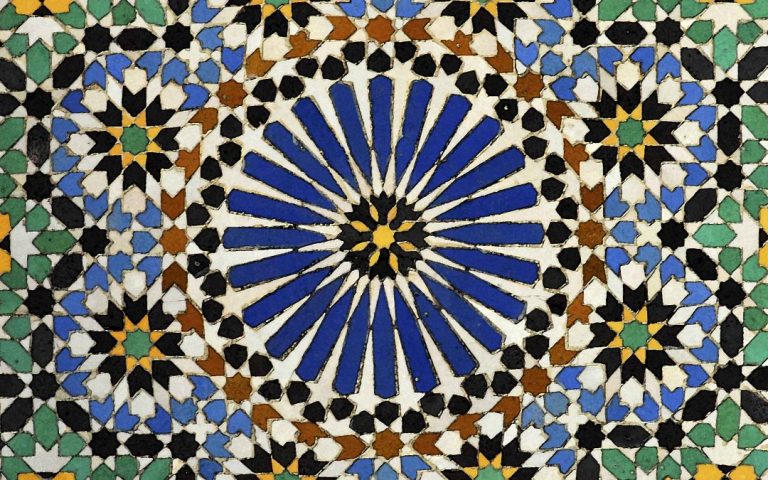
Initial steps:
The evidence shows that the history of tiling in Iran goes back to prehistoric times. In the ancient site of Choghazanbil, related to the Elamite period, examples of simple and unglazed tiles have been discovered. These tiles, which were mostly functional, were used for drainage and insulation of buildings.
Prosperity in the Achaemenid period:
The Achaemenid period can be considered a turning point in the history of Iranian tile work. In this period, using colored glazes, tiles became a decorative element. Apadana Palace in Persepolis is an outstanding example of the Achaemenid tiling art, where glazed tiles with different motifs are used to decorate the walls and entrances.
Developments in the Islamic period:
With the arrival of Islam in Iran, the art of tiling also underwent new developments. During this period, tiles were mostly used to decorate mosques, schools and religious buildings. Geometric, Islamic motifs and verses of the Holy Quran were among the common designs in tile work of the Islamic period.
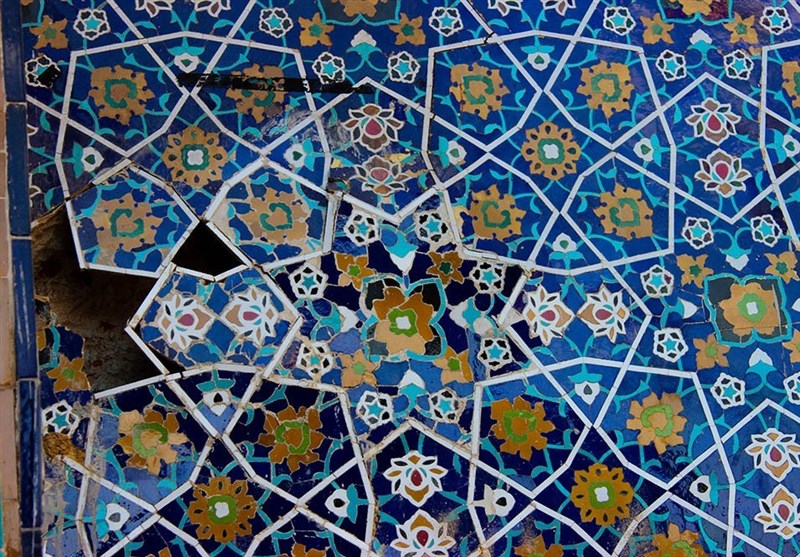
The peak of prosperity in the Seljuk period:
The Seljuk period can be considered the golden age of Iranian tile work. In this period, with the progress in the techniques of glazing and firing tiles, we see a remarkable variety and elegance in the designs and colors of the tiles. Isfahan Grand Mosque, Qazvin Grand Mosque and Soltanieh Dome are among the masterpieces of tile work of the Seljuk period.
Innovation during Ilkhanid period:
During the Ilkhanid period, the art of Iranian tiling became more elegant and innovative. During this period, tiles were also used to decorate non-religious buildings such as palaces and caravanserais. Also, new techniques such as mosaic tile and seven-color tile were invented in this period.
Continuity of prosperity in the Timurid and Safavid periods:
In the Timurid and Safavid periods, the art of Iranian tiling continued to flourish. In these periods, tiles were used to decorate mosques, schools, palaces, and various other buildings. Slime designs, flowers and birds and natural landscapes were among the common motifs in tile work of these periods.
Contemporary era:
In the contemporary era, the art of Iranian tiling has undergone new developments. Along with preserving traditional techniques, we see new innovations in this field. The use of tiles in interior decoration, modern designs and combining the art of tiling with other arts are among these developments.
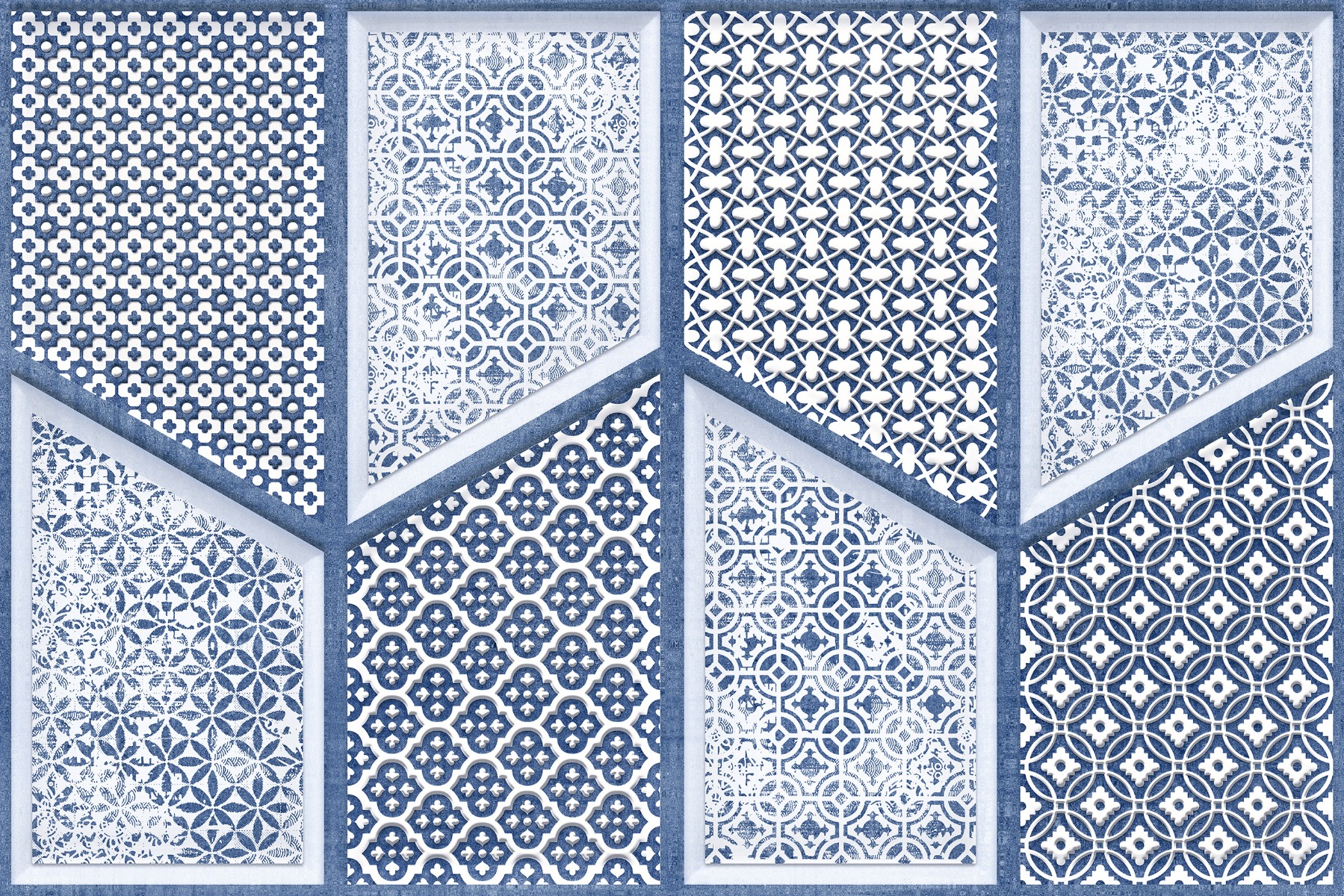
The role of Iranian tiles in culture and national identity:
As one of the main elements of Iranian architecture, Iranian tiles play an essential role in the culture and national identity of Iranians. This original art has been passed down from generation to generation and today it is known as a symbol of Iranian beauty, elegance and creativity all over the world.
Iranian tile, a valuable treasure:
The art of Iranian tiling is a valuable treasure of Iran’s history, culture and art. Preservation and revival of this original art is a common concern for all Iranians. By supporting the artists and artisans of this field, we can leave this precious heritage for future generations.
Types of Iranian tile designs:
Iranian tile is one of the original and famous arts of Iran, which is several thousand years old. This beautiful art has gone through many changes and transformations throughout the history, and in every period, it has adorned itself with a special splendor and beauty with the innovation and elegance of Iranian artists.
Iranian tiles are produced in various colors, designs and
patterns, each of which has its own unique beauty. In this article, we will examine the types of Iranian tile designs and their characteristics.
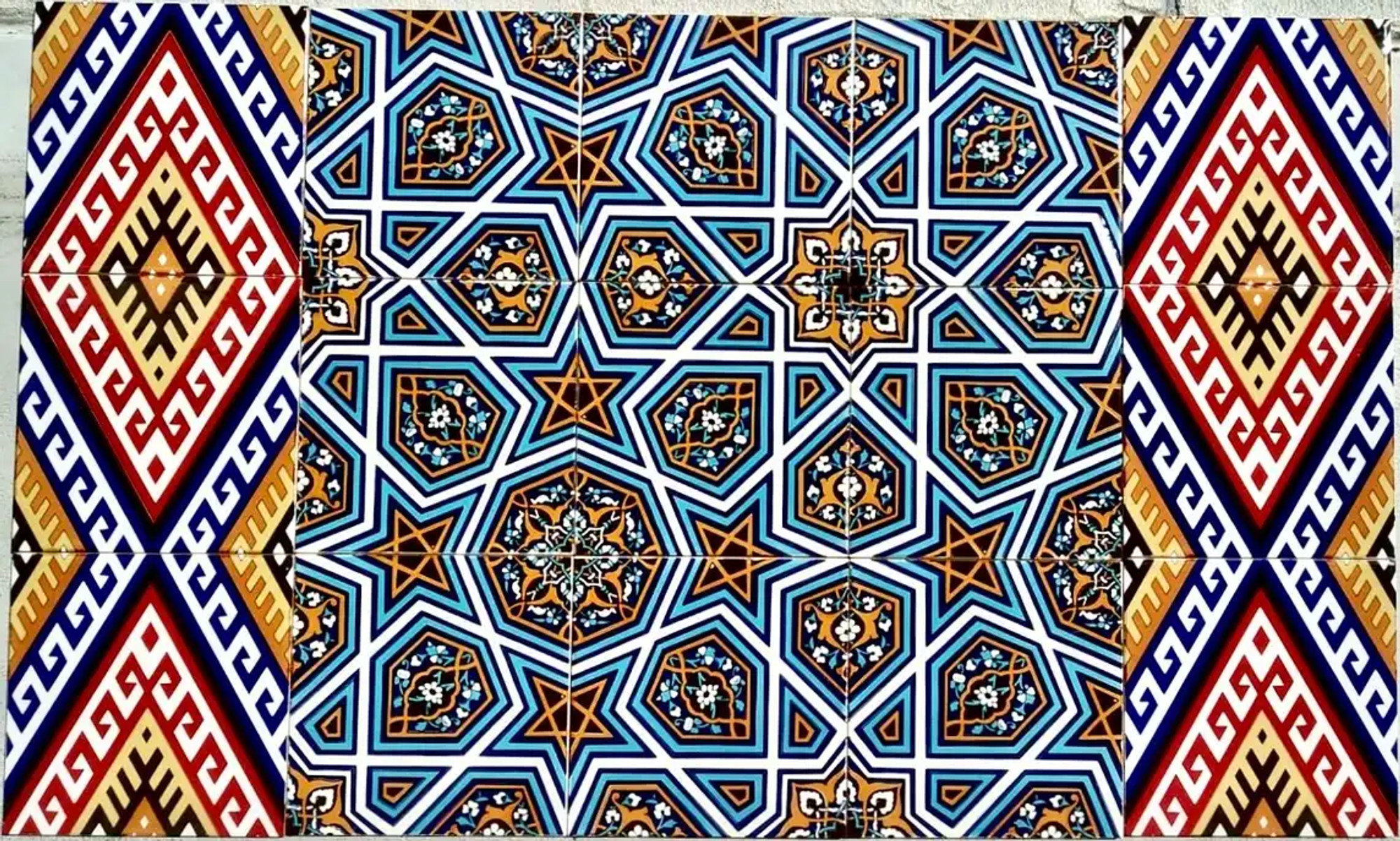
- Iranian golden tiles:
These types of tiles get a shiny and luxurious appearance by using gold glazes or similar colors. Golden tiles were often used in the decoration of religious buildings, palaces and royal mansions, giving them a magnificent and royal appearance.
- Persian mosaic tile:
In this method, artists cut small tiles in different colors and designs and then delicately and carefully put them together to create an overall design or pattern. Maragh tile is one of the most delicate and complex types of Iranian tiles, and because of its extraordinary beauty and elegance, it was used in the decoration of important and valuable buildings.
- Iranian Maqali tile:
Maqali tile is a type of mosaic tile in which geometric pieces such as triangles, rhombuses and stars are used in different colors to create geometric and regular designs. This type of tile gives an eye-catching and unique effect to the space due to its special arrangement.
- Iranian building tiles:
Masonry tile is a simple and unpatterned tile that is produced in different sizes. This type of tile is mostly used to cover large surfaces such as walls and floors and is widely used due to its simplicity and reasonable price.
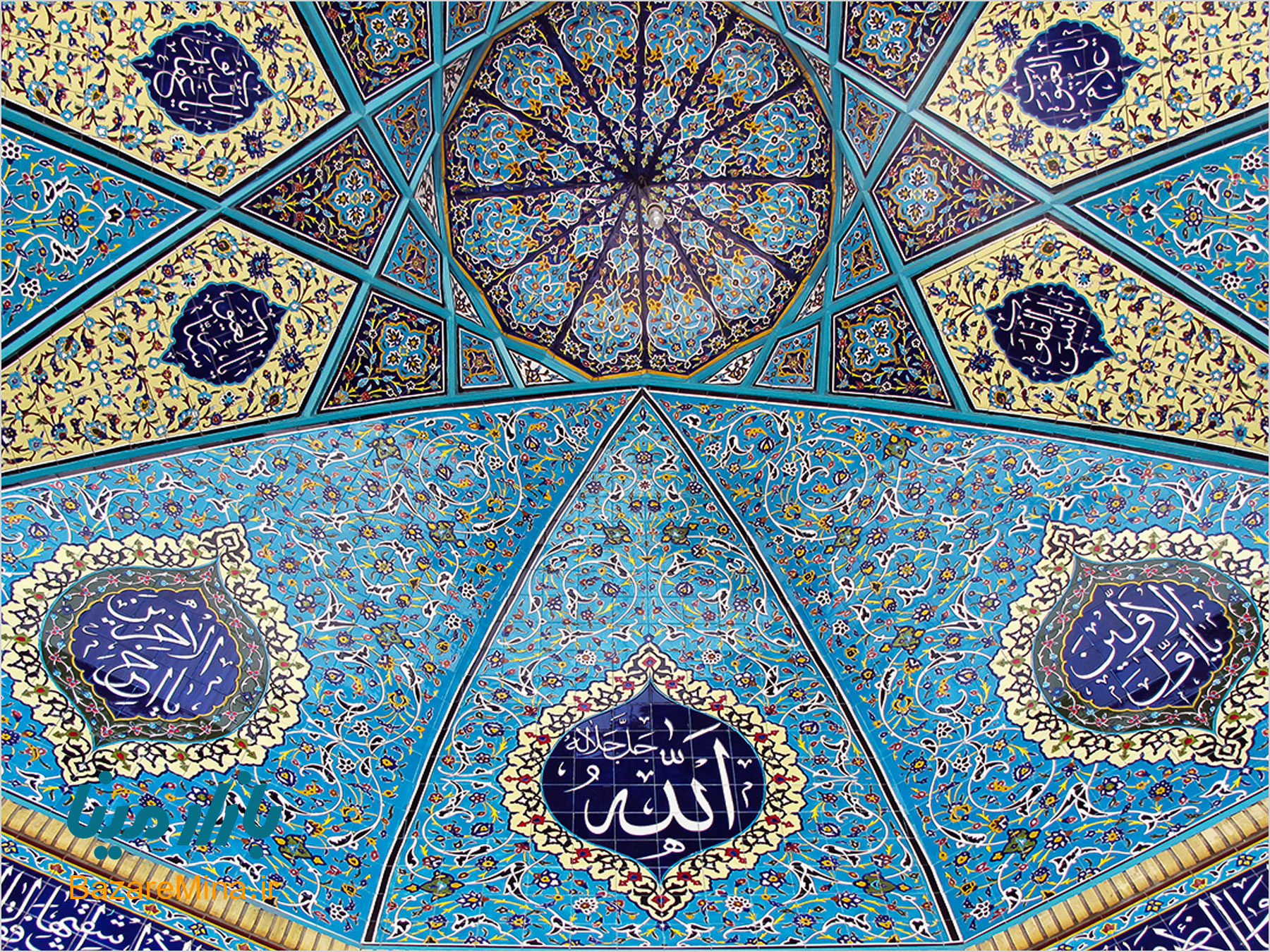
- Iranian enamel (Minakari) tiles:
Enamel (Minakari) tile is a type of glazed tile that is decorated with various colors and delicate and beautiful motifs. This type of tile was mostly used in the decoration of religious and historical buildings, and because of its beauty and elegance, it is considered one of the most popular types of Iranian tiles.
- Iranian seven color tiles:
The seven-color tile is a type of enamel (Minakari) tile in which seven main glaze colors are used. This type of tile has a very beautiful and eye-catching effect due to its high color variety and delicate and rich motifs, and it was mostly used in the decoration of religious and historical buildings.
- Iranian moqrans tile:
Moqrans tile is a type of tile that is used to create moqrans designs. In this method, the tiles are installed in a stepped and nested manner and give a three-dimensional effect and volume to the space. Moqrans tile was mostly used in the decoration of roofs and domes.
- Iranian lace (Mesh) tile:
Lace (Mesh) tile is a type of grid tile that consists of small pieces of tile together. This type of tile transmits light beautifully and creates a bright and pleasant space. Lace (Mesh) tiles were mostly used in the decoration of buildings in order to provide ventilation and create shade.
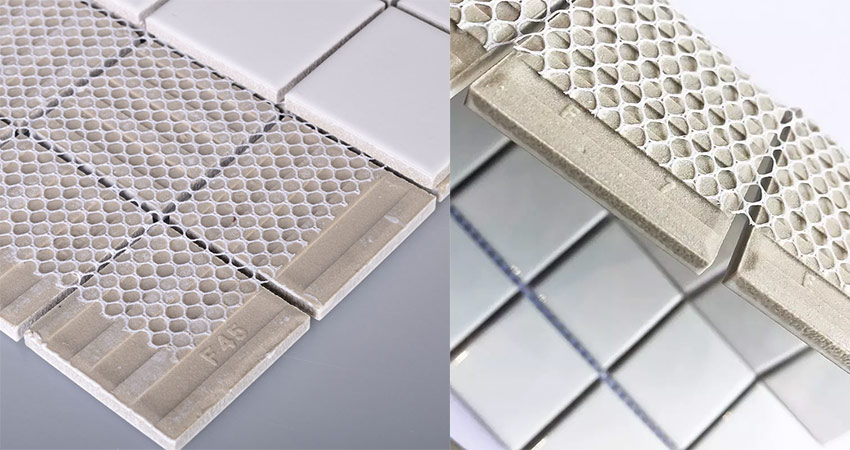
In addition to these main designs, there are other types of Iranian tiles, such as Zarinfam tiles, knotting (gerehechini) tiles, Brick facade (Ajornama) tiles and rectangular tiles. Each of these types of tiles has its own characteristics and uses, and together they form a rich and diverse collection of Iranian tile art.
Iranian tile is more than just a decorative element, it is symbol of Iranian culture, history and art that gives elegance, beauty and originality to different spaces. This original art has not only not lost its prosperity with the passage of time, but with the innovation and creativity of Iranian artists, it is always evolving and dynamic.
Choosing the right Iranian tile design:

Choosing the right Iranian tile design depends on various factors such as architectural style, type of space, personal taste and budget.
Architectural style: If you want to use Iranian tiles in a historical or traditional building, you should choose designs that are in harmony with the architectural style of that building. For example, marble and enamel tiles with Slimi and Khatai designs are suitable for the decoration of historical buildings.
قیمت های موجود در سایت تاریخ بروزرسانی آن ها ذکر شده و قیمت نهایی محصولات نمی باشند. لطفا جهت ثبت سفارش و استعلام قیمت بروز با کارشناسان ما در ارتباط باشید.
(035-3357)